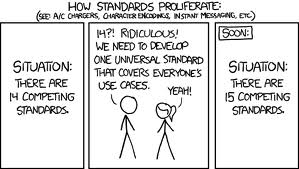bradtem
Robocar consultant
Oh, I know the reasons we took the path of onboard charger. When you are trying to get a new powertrain going, you want to make it as easy as possible to get charging in lots of places, so you want those chargers to be cheap. What's odd of course is that EVSEs are so expensive considering there is actually almost nothing in them but a cable, plug, relay and the simplest of electronics.Actually, you're about 25 years late. This battle already happened once in the 1990's. GM came up with the Inductive charging with the charger off board for the EV1. Toyota and Dolphin adopted this as well. The obstructionist SAE J-1772 committee countered with the original AVCON standard that required off board chargers. Ford and Honda jumped on it.
Standards are such great things.

There are some advantages of charger-in-car, namely that the charger is tuned to the needs of that car. However, portable charger-in-trunk solves that but then you need two chargers, the one in your home and the portable. It's a chicken and egg problem not easily solved. Though it's interesting to note that even with fact that DC charging is always done with external charger, it was flexible enough to adapt to 800v for the move to 350kw even though initially it was all around 400v. It's not an easy call. If I build a new type of battery that needs fancy charging, charger-with-car makes sense and may still be needed. But with charger-in-station you can get innovation and new chargers that do things better and do things that are too expensive to put in the car. Of course another option is that you put a DC powered charger in the car to do the fancy stuff, which takes DC input and relies on the fact it can command any voltage over the supported range of voltages, and the unit with the car does the rest. Flexible though a touch more expensive.


